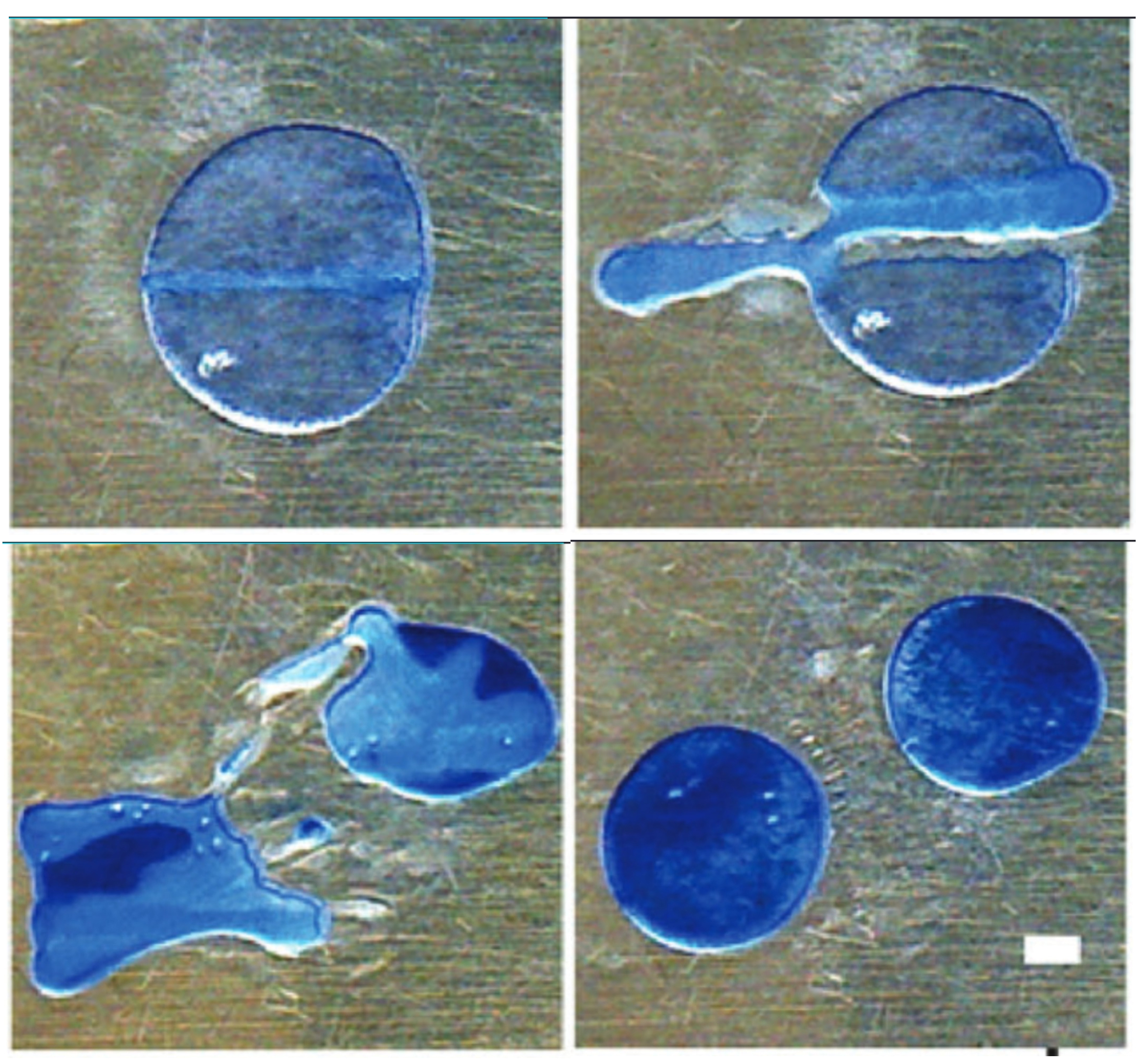| Jan 16, 2024 | |
Material science advance could lead to airplanes that optimize their shape in flight |
|
| (Nanowerk News) Materials and objects could take on different shapes by themselves through a method developed at KTH Royal Institute of Technology. Breakthrough tests showed how microscale melting and cooling of a wide range of materials – such as plastics and metals – can be manipulated to reorganize their mass and form new shapes. | |
| Performed in 2D with paraffin as the test material, the study introduces a new path for development of materials that can be programmed to shapeshift in 3D autonomously, says Professor Wouter van der Wijngaart, a researcher in the Division of Micro and Nanosystems at KTH Royal Institute of Technology in Stockholm. | |
| The findings have been published in Advanced Functional Materials ("Programmable Matter with Free and High-Resolution Transfiguration and Locomotion"). | |
 |
|
| Clockwise from top left, a blog of paraffin is transformed without direct contact. The change from one round shape to two is captured in four of its stages of self-transformation. (Image: KTH Royal Institute of Technology) | |
| With the new technology the researchers envision limitless possibilities, from cars and airplanes that constantly adjust their form to optimize drag, to meeting rooms where the required seating is generated on demand. | |
| “This could enable limitless on-the-fly creation of tools and other objects, without introducing additional materials,” van der Wijngaart says. | |
| The method relies on a laser to melt and shift material, bit by bit, so that it moves from one side of the object to another. | |
| “Everything is just shifted a few tens of micrometers during each cycle,” van der Wijngaart says. “It can reshape objects to pass through narrow gaps and reconstitute them into any target shape.” | |
| The repetition of this phase-shift ultimately reshapes the material into any form desired, with greater freedom of shape and spatial resolution than other techniques today, he says. Integrating the heating mechanism inside actuals object will enable them to shapeshift autonomously. | |
| He says that this breakthrough in material science and engineering “could lead to advancements in that were once deemed impossible.” |
| Source: KTH Royal Institute of Technology (Note: Content may be edited for style and length) |
We curated a list with the (what we think) 10 best robotics and AI podcasts – check them out!
Also check out our Smartworlder section with articles on smart tech, AI and more.

